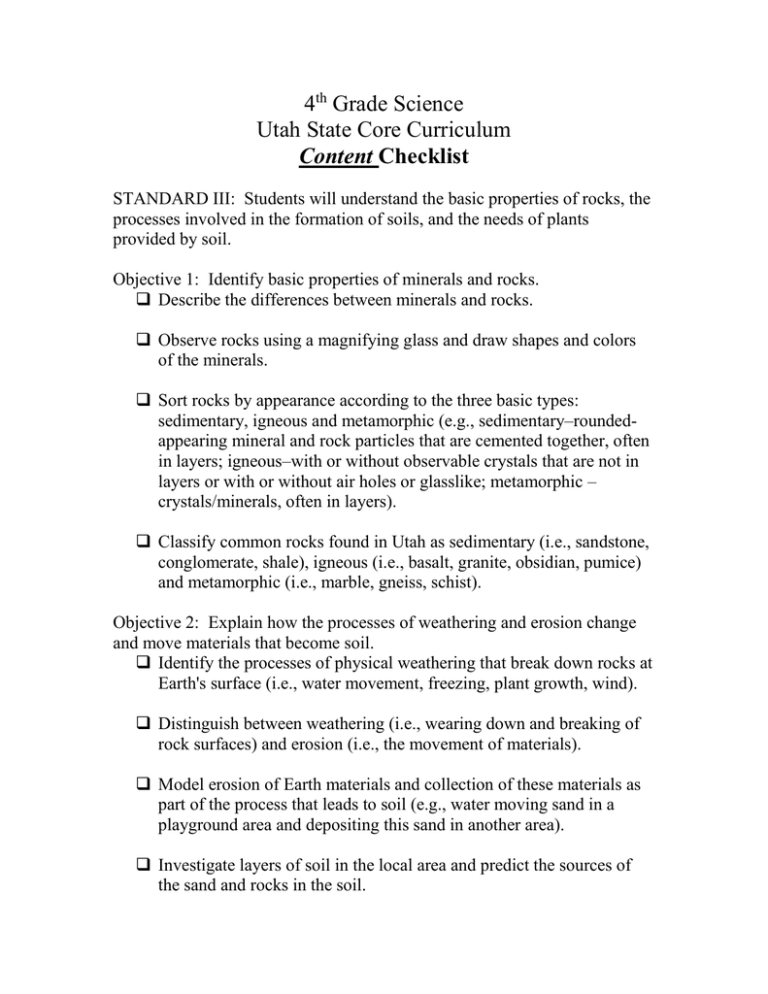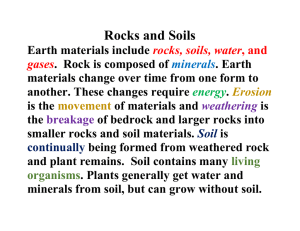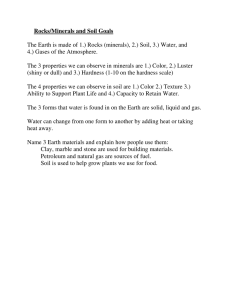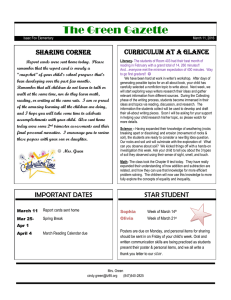4 Grade Science Utah State Core Curriculum Content
advertisement

4th Grade Science Utah State Core Curriculum Content Checklist STANDARD III: Students will understand the basic properties of rocks, the processes involved in the formation of soils, and the needs of plants provided by soil. Objective 1: Identify basic properties of minerals and rocks. Describe the differences between minerals and rocks. Observe rocks using a magnifying glass and draw shapes and colors of the minerals. Sort rocks by appearance according to the three basic types: sedimentary, igneous and metamorphic (e.g., sedimentary–roundedappearing mineral and rock particles that are cemented together, often in layers; igneous–with or without observable crystals that are not in layers or with or without air holes or glasslike; metamorphic – crystals/minerals, often in layers). Classify common rocks found in Utah as sedimentary (i.e., sandstone, conglomerate, shale), igneous (i.e., basalt, granite, obsidian, pumice) and metamorphic (i.e., marble, gneiss, schist). Objective 2: Explain how the processes of weathering and erosion change and move materials that become soil. Identify the processes of physical weathering that break down rocks at Earth's surface (i.e., water movement, freezing, plant growth, wind). Distinguish between weathering (i.e., wearing down and breaking of rock surfaces) and erosion (i.e., the movement of materials). Model erosion of Earth materials and collection of these materials as part of the process that leads to soil (e.g., water moving sand in a playground area and depositing this sand in another area). Investigate layers of soil in the local area and predict the sources of the sand and rocks in the soil. Objective 3: Observe the basic components of soil and relate the components to plant growth. Observe and list the components of soil (i.e., minerals, rocks, air, water, living and dead organisms) and distinguish between the living, nonliving, and once living components of soil. Diagram or model a soil profile showing topsoil, subsoil, and bedrock, and how the layers differ in composition. Relate the components of soils to the growth of plants in soil (e.g., mineral nutrients, water). Explain how plants may help control the erosion of soil. Research and investigate ways to provide mineral nutrients for plants to grow without soil (e.g., grow plants in wet towels, grow plants in wet gravel, grow plants in water).







